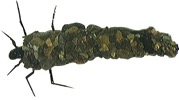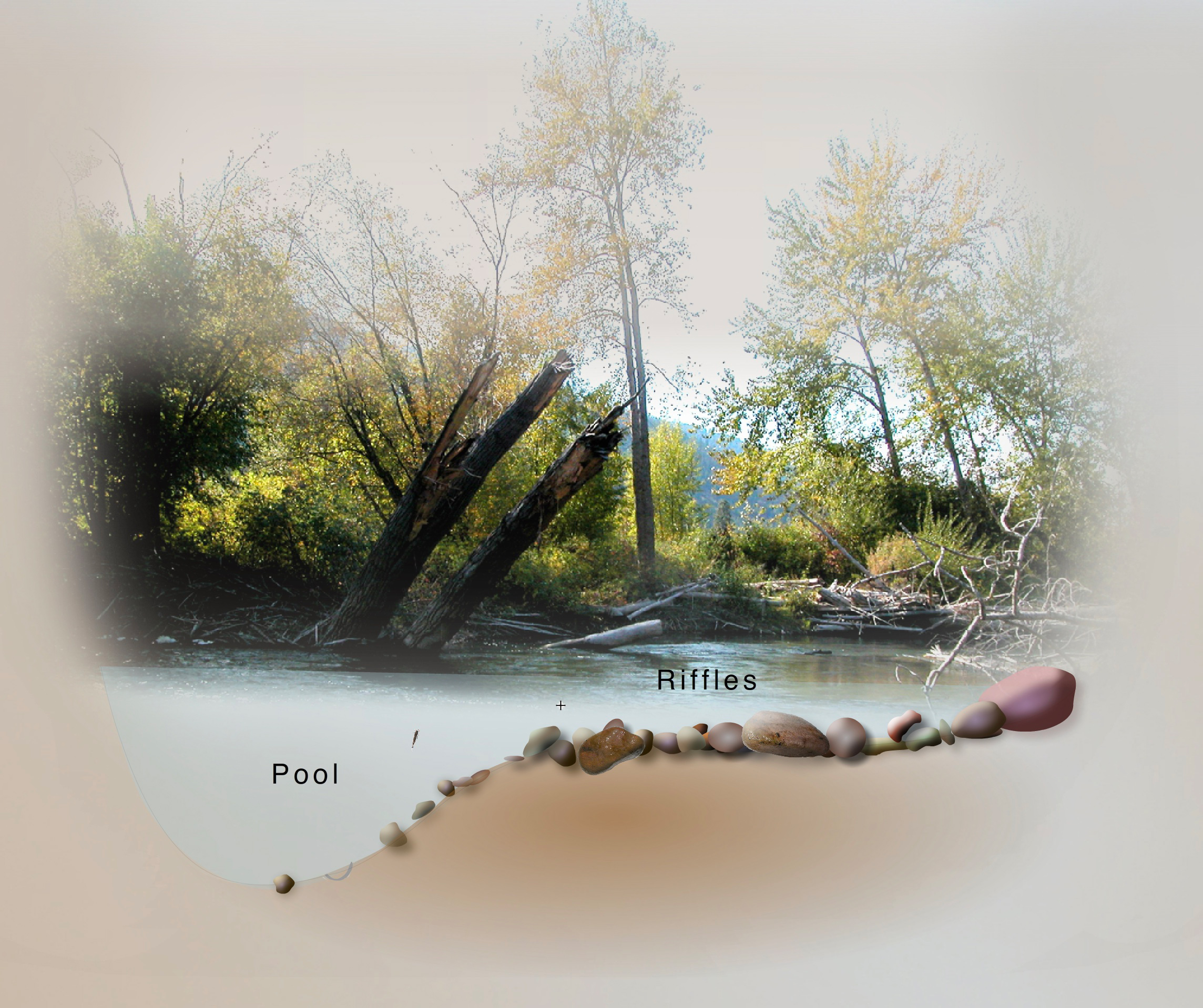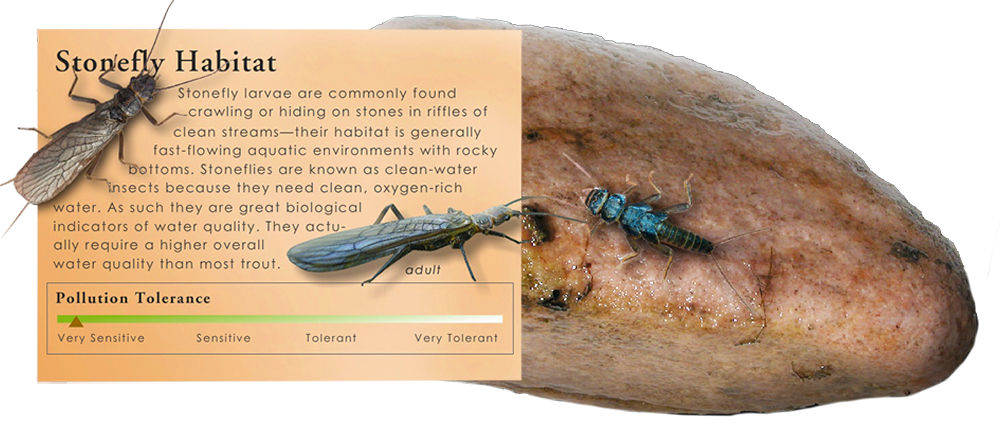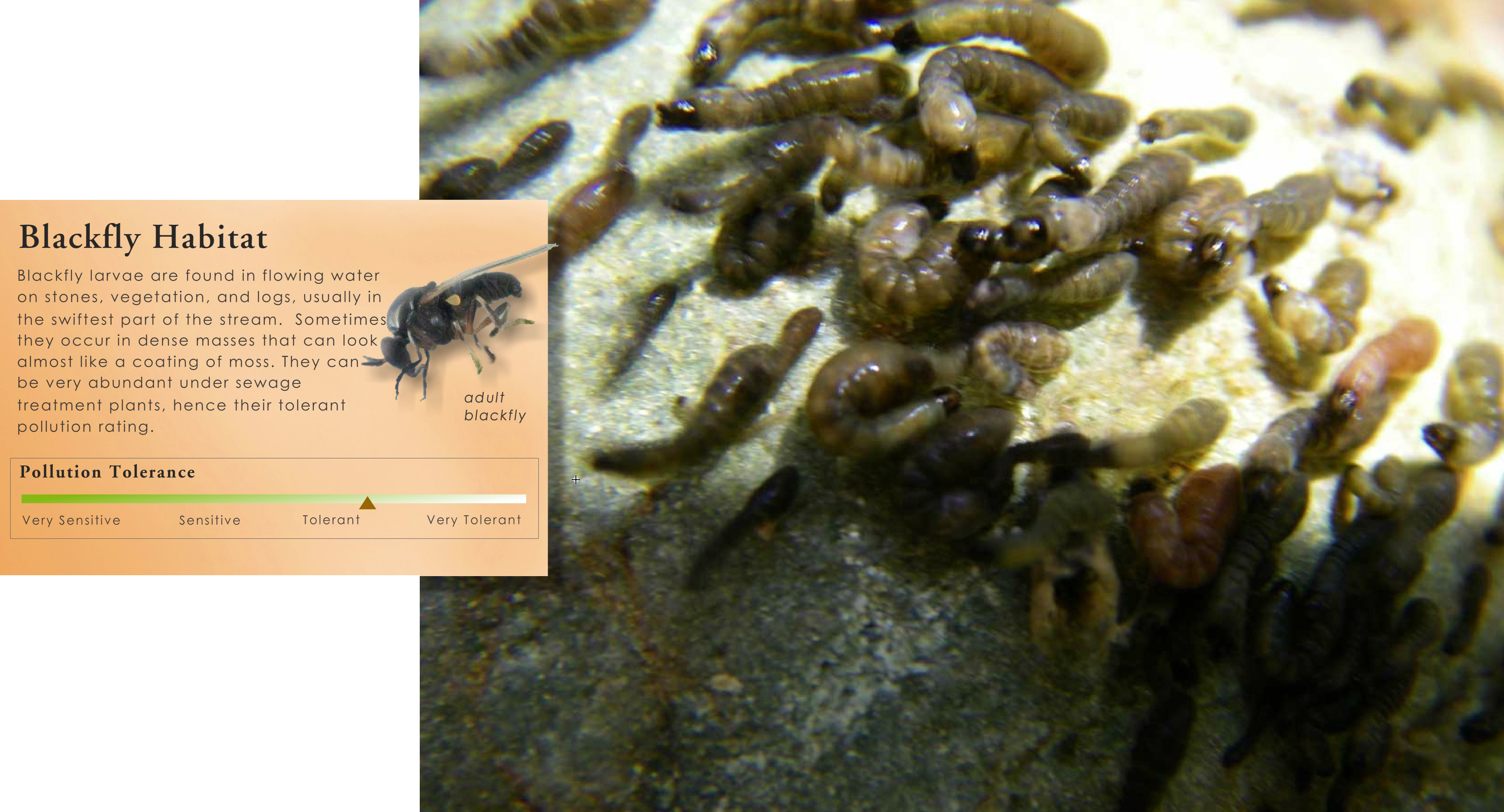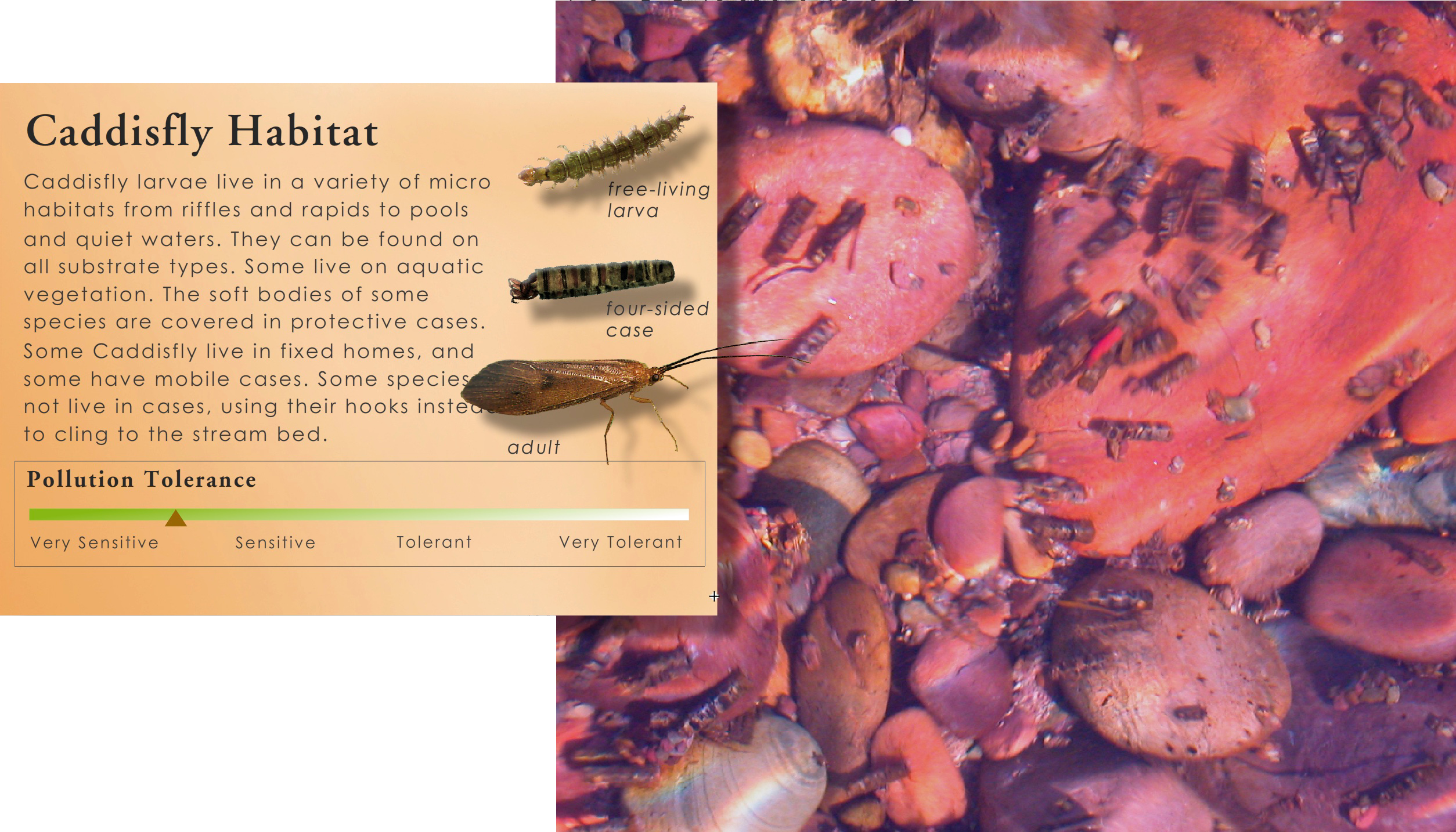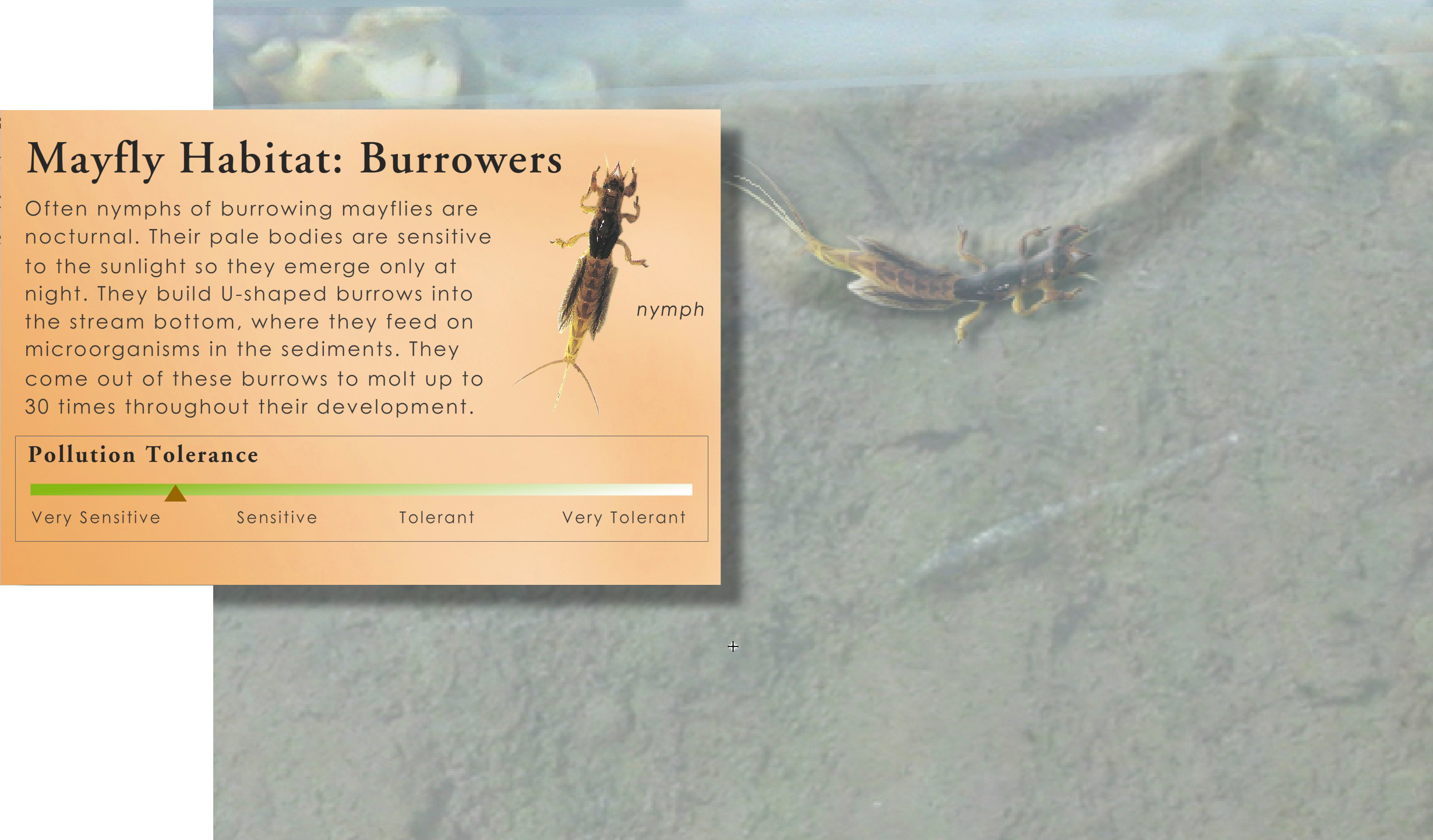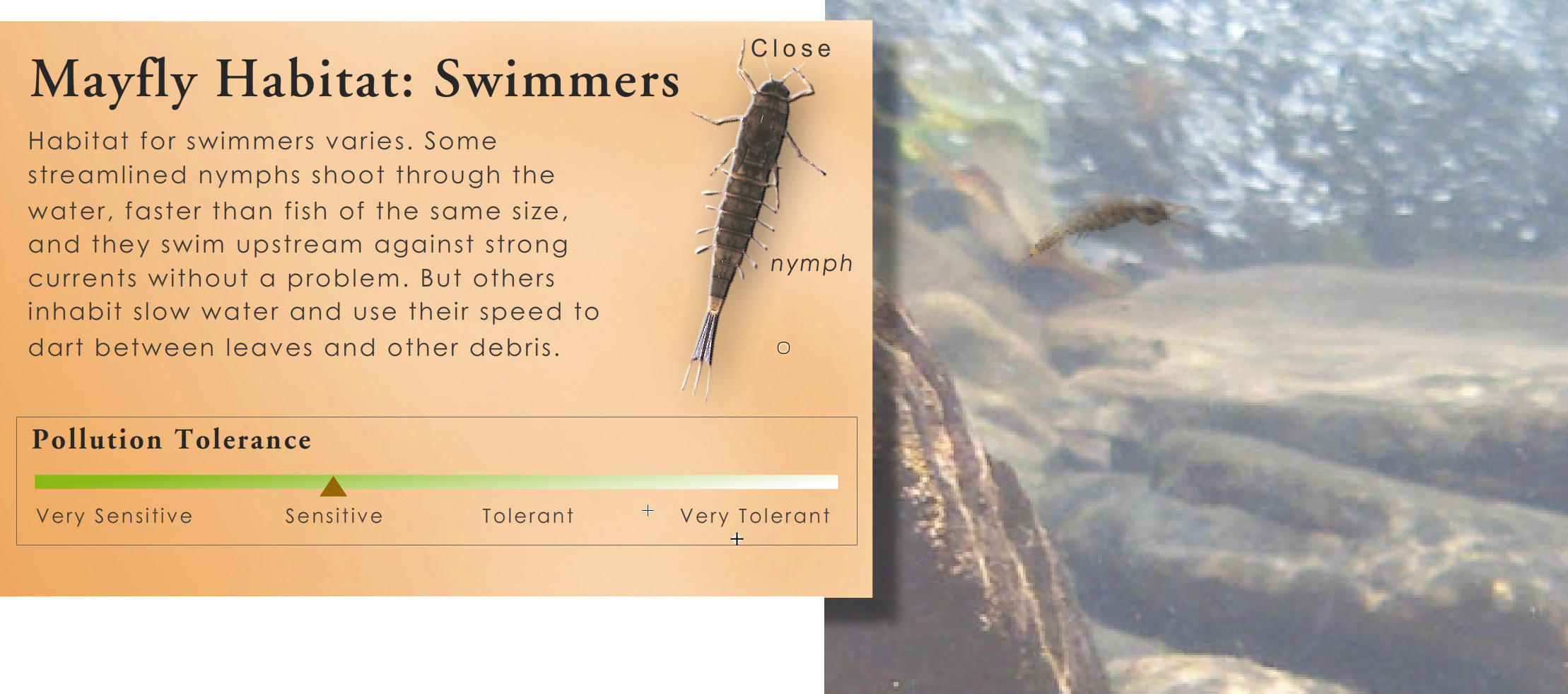Habitat: Aquatic Insect Habitat
Aquatic insects—mayflies, stoneflies, caddisflies, and an assortment of aquatic beetles, flies, and bugs—are an integral part of any stream, each with unique habitat preferences. Select any habitat type (riffle, pool, run, glide) in a stream, and there will be a distinct group of insects adapted for that environment. In addition to providing endless diversity to a stream’s biological community, insects are a vital link between a stream’s energy sources and higher level consumers (i.e., fish). Energy inputs—whether from the riparian zone (leaves, sticks, pine needles) or within the stream (algae, aquatic plants, and periphyton)—drive stream systems. Aquatic insects aid in the transport of these energy sources up the food chain. This processing of energy is not only one of the primary ingredients to producing healthy native trout, it also ensures a healthy stream system. Aquatic insects also tell us how healthy the river is because aquatic insects are often very specific in their habitat requirements. Knowing where they live and why is key to understanding the river. Click on the letters below to explore aquatic insect habitat.
Please be patient, letters on the photo take a moment to load.
Habitat: Aquatic Insect Habitat
Aquatic insects are a vital link between a stream’s energy sources and higher level consumers (i.e., fish). They also tell us how healthy the river is because aquatic insects are often very specific in their habitat requirements. Click on the letters below to explore aquatic insect habitat.
Click on the tabs below the image to learn more.
Click on a letter in the image to learn what insect lives there
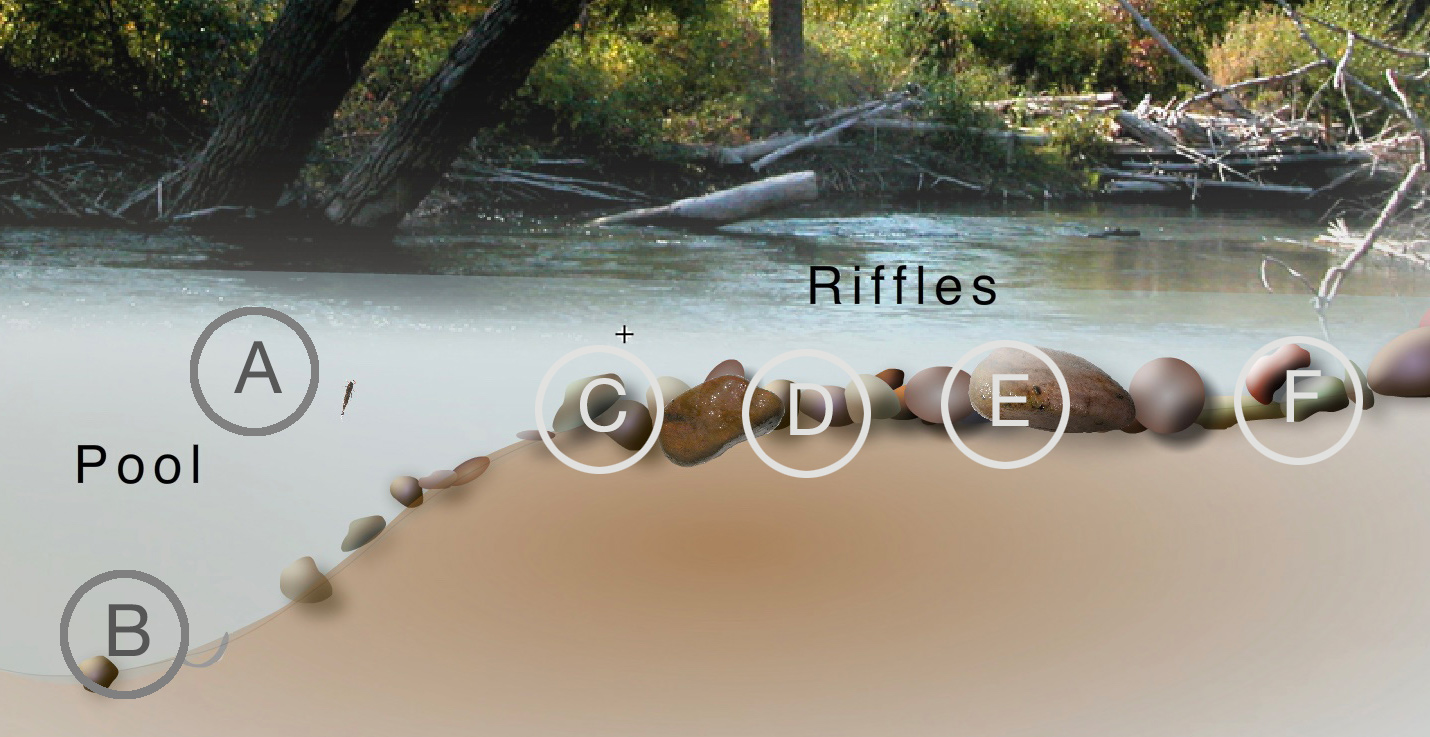
B. Mayfly Habitat: Burrowers

C. Mayfly Habitat: Clingers and Crawlers


D. Blackfly Habitat

D. Stonefly Habitat

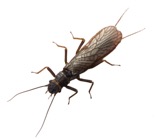
D. Caddisfly Habitat
